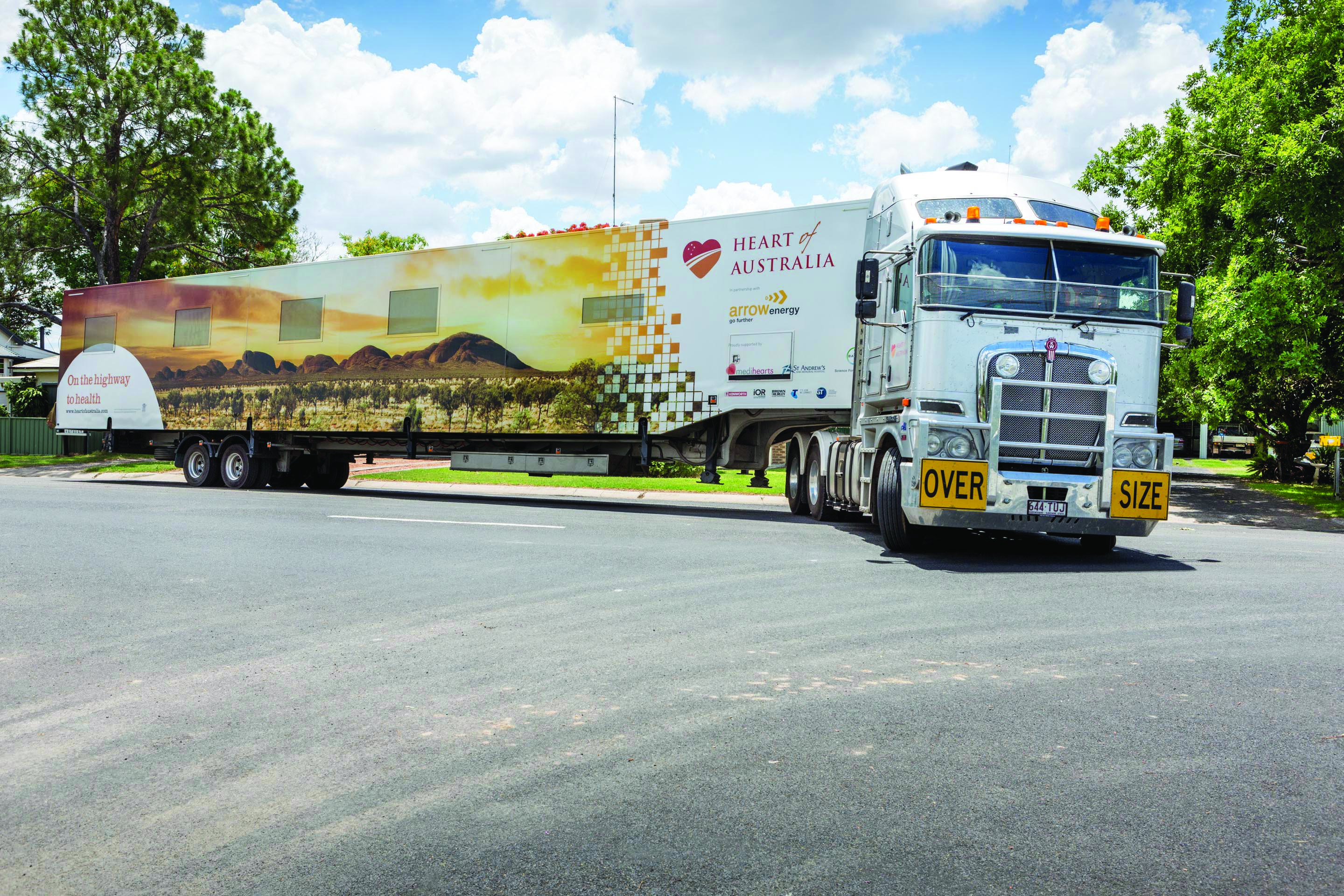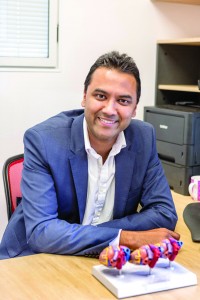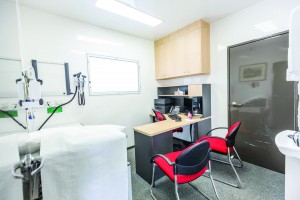In Goondiwindi, a town 350km outside of Brisbane, one cardiologist’s dream is coming true. Dr Rolf Gomes spoke at the launch of the new vehicles to add to their ‘Heart of Australia’ fleet, that brings top specialists to rural and remote towns in Queensland. The Heart of Australia is the brainchild of Dr Gomes […]
In Goondiwindi, a town 350km outside of Brisbane, one cardiologist’s dream is coming true.
Dr Rolf Gomes spoke at the launch of the new vehicles to add to their ‘Heart of Australia’ fleet, that brings top specialists to rural and remote towns in Queensland.
The Heart of Australia is the brainchild of Dr Gomes who, upset by the lack of accessibility and reliability for regional patients as a registrar, committed to bringing the specialists to them.
Each visit saves patients an average of 680kms in travel, the Brisbane doctor says.
Since the project got off the ground in October 2014, the Heart of Australia truck has done more than 72,000km on the road and seen around 2500 patients.
The carefully tailored truck, towed with a Kenworth prime mover, can provide patients with more than just a visiting specialist with a stethoscope.
Instead, the project boasts that their patients have access to the kinds of cardiac, respiratory and sleep clinic facilities on offer in the major cities.
It’s growing, but the team is hoping to secure government funding before moving into other states requesting a service like this.
What drove you to set up the Heart of Australia program?
As a registrar during rotations in remote communities I experienced first-hand the challenges in trying to diagnose and treat patients without the specialist and diagnostic services people in the city take for granted.
I remember one patient with severe neck pain after falling of a quad bike on a farm who simply couldn’t, and refused to, travel hundreds of kilometres for an x-ray of his cervical spine.
But while it is a difficult problem, it is one that can be fixed. Right now there exists no organisational framework to sustainably deliver specialist services to regional communities, and we are still looking to the altruism of individuals and uncoordinated piecemeal solutions.
While the mobile clinic serves as a practical solution delivering both specialists and transportable health infrastructure (so that clinicians have the tools they need to do the job on site), the much larger vision involves laying down the foundations for an organisation which will begin to sustainably deliver specialist services to regional communities into the future.
This will allow us to support a remote and ageing population into the future and ensure these communities remain vibrant.
Could you explain how inequity in remote areas is labelled a ‘waiting list’ problem?
In areas where services are non-existent, patients requiring further investigation are usually referred to city centres. This means joining a queue and often months requiring multiple visits to and fro before someone can tell them if their symptoms are serious.
Some will die waiting and the economic and social burden causes significant stress and anxiety. Some will simply not go and potentially risk dying. Some will end up admitted to their local hospital and be transferred at enormous cost to the tax payer to city centres for treatment.
Amid the numbers and the dollars and the statistics we are ultimately dealing with the sanctity of human life, and I dread to think we have stooped to now placing a price on human life.
For many people waiting lists are something we read or hear about, but on many occasions as a public hospital registrar I had to ring a patient who has failed to turn up for a pre-operative assessment only to get their widow on the phone, telling you that poor Fred was found dead on the toilet only last week.
Only then do you fully appreciate the impact of waiting lists particularly when it comes to cardiac conditions. When that dreaded feeling twists your stomach into a knot and lingers with you all week because you know very clearly what has happened… you know that one has fallen through the cracks because of a bloody waiting list!
How does the Heart of Australia bus actually work?
The Heart of Australia bus provides a cardiologist, in the flesh, at the patient’s doorstep monthly and a state of the art cardiac and respiratory clinic fortnightly.
Patients need a referral from their GP to access the service. Doctors and support staff are flown in to meet the truck at different locations as it travels across the state.
What does this bring to the patients beyond what they have access to now?
In many places we visit there is nothing there as far as cardiac services go. More than just bringing a cardiologist with a stethoscope, the Heart of Australia clinic brings facilities such as treadmills (for stress testing), cardiac ultrasound, Holter (heart rhythm) monitoring, respiratory function testing sleep apnoea testing.
In relation to indigenous patients, there are significant issues with patients being lost to follow up, so the ability to close that loop from symptom to diagnosis to treatment all within the one visit brings significant practical advantages.
Over the past 12 months the service has potentially saved the lives of 70 people. It is a great feeling knowing that as we approach Christmas these patients will be with their families instead of potentially having perished.
As well as dismantling some of the barriers to specialist care for patients, how does the Heart of Australia impact on the local healthcare workers?
We believe that by eliminating diagnostic uncertainty our program supports regional GPs and relieves anxiety associated with potentially missing life threatening conditions because of a simple lack of services locally.
Heart of Australia also reduces the pressure on public hospital waiting lists by providing services locally. It’s one thing to be hobbling around with a sore hip waiting for a hip replacement. But six months waiting for someone to tell you if the pain in your chest means you are on the verge of dropping dead from a heart attack is just plain ridiculous!
I am also absolutely thrilled that we have now started holding regular GP education session while on the road to bring medical education to many of these communities.
So what’s next?
With government support we could expand to more communities as well as more specialties benefitting more Australians.
Twelve months ago we were a pilot, but the program has now demonstrated that Heart of Australia can save lives, save money, engage with indigenous communities and attract specialists to the bush.
I believe the phases such as the “tyranny of distance’ tend to romanticise this issue where as we should be embarrassed and confronted by it. We need to move beyond polite naval-gazing apathy and slogans and look to models which can actually deliver solutions, savings and outcomes.
| Nuts & bolts
The mobile clinic cost almost $2 million to set up and will require another $1.5-$2 million per year to run. It visits 11 remote communities across Queensland: Dalby, Goondiwindi, St George, Charleville, Roma, Emerald, Barcaldine, Longreach, Hughenden, Charters Towers and Moranbah. There are 8 specialists, 6 sonographers, 3 cardiac scientists as well as administrative, IT and support staff who provide the man power. The clinic has over 70 square meters of floor space, including a reception, 2 consulting rooms and a cardiac testing room. The truck is self-sufficient, and has air conditioning, toilet facilities, laundry facilities, a small kitchenette and veranda. |
NOTE: TMR travelled to Goondiwindi with the support of Bayer, a sponsor of the program.




